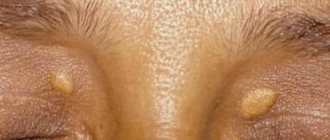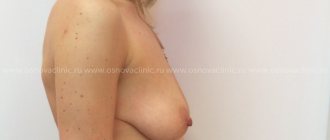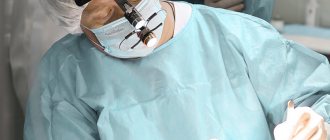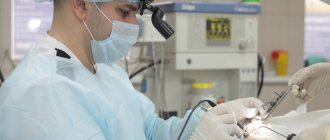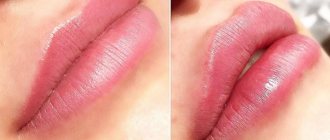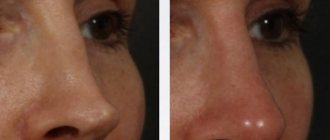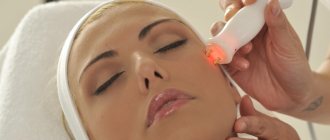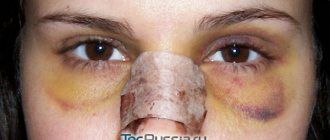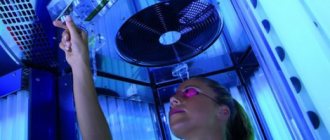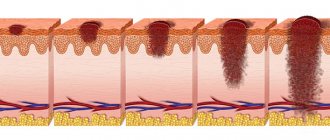Septoplasty is a procedure that eliminates a defect such as a deviated nasal septum. This deviation is often the cause of not only an aesthetic violation of facial proportions, but also the cause of a number of diseases of the respiratory system. After manipulations of this type, a certain period of rehabilitation is required, during which certain precautions must be followed.
Modern methods of rehabilitation after septoplasty
The operation is performed endoscopically under anesthesia, and therefore is a low-traumatic intervention. The latest septoplasty techniques significantly reduce discomfort and complications in the early and late recovery periods. Patients are advised to strictly follow all medical recommendations; rehabilitation after septoplasty lasts up to 3 months.
To avoid discomfort after surgery and improve breathing through the nose, special splints according to Reiter or splints made of soft silicone have been developed. The material does not harm damaged mucous membranes, prevents the development of complications, and is painlessly removed from the nasal passages. The splints have a seven-sided shape, which follows the anatomy of the nasal septum. The main purpose of splints after septoplasty is to fix the septum along its entire length.
In addition to splints, dense inserts or tampons are used that can hold the septum. Before installation, they are pre-moistened in an antibacterial or hemostatic composition. Tampons are removed just one day after the intervention, turundas are used for up to 5 days.
The rehabilitation period involves the use of local medications to prevent inflammation, drying out of the nasal mucosa, and bleeding. Popular care products during any period of rehabilitation are:
- solutions for washing and evacuating mucus based on sea water;
- ointments and gels for moisturizing, antiseptics;
- vasoconstrictor, hormonal and antibacterial drops, sprays.
The course of drug therapy after septoplasty varies and depends on the individual characteristics of the body and the characteristics of postoperative wound healing.
Note! There is another method of surgical intervention without incisions - RP technology or laser exposure. The cartilage tissue is melted, and the shape of the nasal septum is restored. After this technique, sutures and corrective splints are also applied to restore the normal topography of the nasal plate. Rehabilitation after this method is much faster.
Perforation and deformation
Sometimes, during an operation, the patient discovers that he has begun to breathe with a whistling sound, that the nasopharynx is dry and an unpleasant pain has settled inside the nose. Such symptoms indicate that the nutrition of the septum has been disrupted and a hole has formed in it that connects the nasal passages. To correct this, a new septoplasty will be required, during which the surgeon will make a “patch” from nearby tissue and thereby solve the problem - and then the recovery will begin again.
It is worse if, after septoplasty, the patient develops new septal deformations that were not there before and which are no less dangerous than those for which the intervention was prescribed in the first place. He may:
- narrowing of the bone arch or nasal passages;
- traces of the deviated septum remain, which were not completely removed;
- the wings of the nose may be excessively excised.
As a result, the patient will experience headaches, dry nasopharynx, difficulty breathing, and loss of smell and taste. To correct the error, a secondary septoplasty will be required, which will allow everything to be done correctly.
Recovery after septoplasty requires care and responsibility from the patient. He must monitor his health in order to track the onset of complications, must rinse his nose several times every day and carefully clean off bloody crusts .
But the result - free breathing, increased immunity, increased performance - is definitely worth it.
How is rehabilitation after septoplasty?
The average duration of the early postoperative period after septoplasty is 3-5 days, sometimes it may take up to 10 days. The total duration of rehabilitation is 2-3 months. During this time, the mucous membranes are restored, the cartilaginous plate is stabilized and fixed in a given position. Recovery time varies depending on many factors; the course of drug treatment after the intervention is determined individually.
Rehabilitation after nasal septoplasty: stages and features
It is important to spend the first day after surgery in the clinic under the supervision of doctors. If there is no deterioration in health and normalization of the general clinical condition, the patient is sent home for outpatient treatment. Immediately after septoplasty, the patient is given dense turundas or silicone splints into the nasal passages to stop bleeding, stabilize the correct position of the septum. In addition to products to care for the nasal passages and the condition of the nasal mucous membranes, sedatives, systemic painkillers, hormonal and anti-inflammatory drugs are prescribed. Patients are prohibited from:
- strong blowing of mucus;
- overheating, visiting a bathhouse, hot tub and sauna;
- sleeping on your back or with your face propped up;
- physical activity, intense sports, forward bending exercises.
It is important to follow a diet that excludes carbonated waters, herbs and hot spices. The diet is filled with gelatinous dishes for the speedy restoration of mucous and cartilage tissue, and with protein for favorable recovery of the body.
Septal splints
Septal splints or silicone splints today are an important aspect of the rehabilitation period. Devices are applied not only after septoplasty and , but also when closing perforations of the nasal plate and rhinoplasty. Installation of septal splints completes the operation regardless of the chosen surgical method; sometimes additional packing of the nasal passages is required.
Note! Surgeons prefer to use this method of rehabilitation to speed up recovery and reduce the risk of complications.
Advantages of septal splints
Septal splints provide stability of the septum, improve nasal breathing, reduce pain after surgery, and also have other advantages:
- Facilitating the evacuation of mucous exudate. Silicone fixatives cover the entire surface of the mucous membranes, preventing the formation of crusts and drying. The mucous exudate is not fixed on the surface of the silicone, and therefore comes out freely. Improving mucus evacuation is facilitated by using special moisturizing solutions and a nasal douche.
- Prevention of swelling. Silicone splints do not stick together, therefore they prevent the closure of the mucous membranes. This eliminates the problem of nasal swelling after septoplasty and impaired nasal breathing.
- Adhesive process. Adhesions are one of the serious complications of the late rehabilitation period; even earlier, the adhesions process required repeated surgical intervention. Septal splints provide a kind of barrier between the mucous membranes of the nasal passages, the ventilation of air masses is not disturbed, and adhesions are not formed.
- Displacement and deformation of the septum. The splints securely hold the septum in its predetermined anatomical position, like a cast on a broken limb. If tampons maintain the formed position of the nasal plate, but do not prevent its displacement, then septal splints do a good job of this task.
- Nasal bleeding. Thanks to their tight and reliable connection to the septum, the splints support the vessels without pinching them. Blood does not accumulate, does not form into clots, and blood circulation is not impaired. Hematomas and bleeding occur in only 1% of all clinical cases.
- Tamponing. In most cases, it is possible to avoid additional packing of the nasal passages immediately after surgery; temporary turundas are usually sufficient to collect the remaining blood. In addition, hard gauze swabs have an additional traumatic effect on the wound surface and can themselves provoke bleeding, displacement, and hematomas.
Thanks to silicone splints, it is possible to solve a number of problems that often arise during the rehabilitation period after septoplasty using outdated methods.
Sinusitis
It occurs if the runny nose that accompanies recovery becomes inflammatory in nature, and the patient for some reason does not notice this and starts the process. The first to suffer are the maxillary sinuses - those located under the eyes and which are directly connected to the nasal passages. You can determine that this has happened by the characteristic symptoms:
- headaches - exhausting, pressing, not relieved by painkillers and become stronger if the patient lies on his side or back;
- runny nose - intense, with yellow or green impurities;
- a pressing, bursting sensation under the eyes, a feeling of fluid transfusion;
- swelling of the face, watery eyes, especially when exposed to bright light.
The patient begins to experience severe oxygen starvation, is constantly lethargic, drowsy, has difficulty responding to external stimuli, and may experience cognitive impairment. If sinusitis starts, it can cause other sinusitis, followed by deafness, blindness, meningitis and disability, so you need to see a doctor in a timely manner. He will appoint:
- warming up - using a bag of salt or a special device for physiotherapy, it doesn’t matter;
- anti-inflammatory sprays - will relieve swelling and alleviate the condition;
- antibiotics or antivirals will destroy the pathogen.
You need to continue washing and peel off the crusts as well. If there is no improvement within two weeks, a puncture may be required - a surgical operation in which purulent contents are sucked out of the sinuses and an antiseptic is poured inside. After it, recovery will also be required.
Postoperative period
At the end of the operation, the patient is observed throughout the entire rehabilitation period. The key criteria for a successful septoplasty are the absence of swelling, bleeding, septic complications, displacement or secondary deformation, restoration of nasal breathing, and absence of discomfort during breathing. It is important to follow all medical recommendations and avoid factors that contribute to complications.
Nose pain
Pain in the nose area is a normal sensation after surgery. The mucous membranes and nasal plate have been traumatized, so residual pain may disturb the entire recovery period. The main condition for the normal course of rehabilitation is a gradual decrease in pain intensity.
In case of severe pain with lacrimation, distension of the nasal sinuses, the administration of narcotic analgesics of the opioid group may be required. However, in most cases, a course of non-steroidal anti-inflammatory drugs based on ketoprofen, ibuprofen, diclofenac is sufficient. While taking NSAIDs, it is important to take into account the deterioration of blood clotting, the development of certain complications from internal organs and systems, and the risk of bleeding.
Important! Doctors recommend coping with the pain on your own and distracting yourself from the condition in the first 1-2 days after surgery. To relieve pain, it is permissible to apply ice to the bridge of the nose, forehead, and targeted cold compresses to the wings of the nose.
General recommendations
General medical recommendations are universal for all patients. First of all, it is unacceptable to touch, scratch or rub your nose. This can cause pain, discomfort, and other unpleasant complications. Friction impairs recovery and can injure or displace the nasal septum. Other recommendations include:
- regular antiseptic treatment of the nose;
- moisturizing the mucous passages several times a day;
- avoiding dry rooms, walking in windy weather, getting foreign objects into the nasal cavity (dust, vapors of poisons and chemicals and other fine particles);
- protective regime and prevention of respiratory infections.
It is not recommended to steam your face or visit the bathhouse or sauna, as overheating can cause bleeding and headaches. It is important to avoid injury, hypothermia, and infection.
Antibiotics, vasoconstrictors, nasal douche
Antibacterial therapy during the rehabilitation period is also an important aspect of treatment. The sole purpose of antibiotic therapy is to prevent secondary infection. The drugs can be used both topically in the form of ointments or drops, and systemically. The course of systemic antibiotic therapy is prescribed individually. Penicillin antibiotics are usually prescribed, which are effective against many aerobic and anaerobic bacterial strains. After a course of systemic antibiotic therapy, it may be necessary to take lacto- and bifidobacteria to prevent intestinal dysbiosis.
Vasoconstrictors are indicated to prevent swelling and bleeding. For these purposes, nasal drops based on xylometazoline are used. Vasoconstrictor drops improve nasal breathing, normalize blood circulation, and improve air flow. This group of drugs should not be used for more than 5-7 days.
A nasal douche is the same as generously rinsing the nose with solutions based on sea salt. A nasal douche can also be used with water-based antiseptics (Chlorhexidine, Furacilin). The course of abundant rinsing can be long, as it does no harm, prevents infection, and facilitates the evacuation of mucus.
Doctors' recommendations
In order for the rehabilitation period after septoplasty to be as comfortable as possible, it is necessary to strictly follow all the recommendations given by specialists:
- you need to sleep only on your back for several weeks;
- do not tilt your head;
- exclude physical activity;
- refrain from visiting swimming pools, the beach, saunas or baths;
- It is not recommended to wear glasses for a month;
- It is advisable to avoid the possibility of contracting colds.
Nose ridge: surgery as a way to get rid of it
During growth, the human body develops unevenly. Bones and cartilage grow at different rates. One of the consequences of such unevenness may be the formation of ridges and spines in the nasal cavity, which leads to difficulty in nasal breathing and many other problems.
Also, some traumatic impacts, such as a broken nose or a strong blow, can cause a ridge to develop in the nose. In such cases, surgery will help correct the current situation and return natural physiological nasal breathing to normal.
For nasal ridge removal, ultrasonic cristotomy or laser removal surgery is most suitable.
The essence of the procedure
Deviation of the internal nasal septum is much more common than we think. According to statistics, only about every fifth person has it perfectly smooth.
Such a defect is quite rare at birth. But by the preschool period, about a third of children have this problem. Some get it due to compression of the face during complicated childbirth. Many babies suffer from falls and minor nose injuries.
Most adults don't even know they need septoplasty. Until they decide to get rid of problems such as snoring, frequent colds and ENT diseases, difficulty breathing, pronouncing words “through the nose.”
They go to an otolaryngologist. And only at his appointment the cause is discovered - an unfortunate curvature of the nasal septum.
Septoplasty helps solve the problem. Depending on the situation, the doctor recommends removing part of the soft tissue, correcting the cartilage, or even filing the nasal bones.
Most manipulations can be performed through the nasal cavity. Therefore, as a rule, there are no external marks or scars left.
